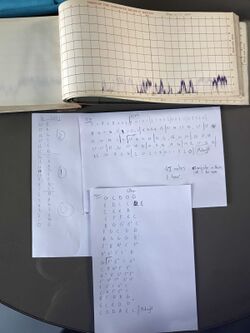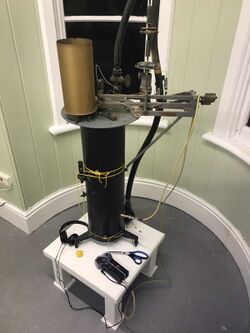Difference between revisions of "Wind/Time Compressor Composer"
| Line 12: | Line 12: | ||
<br/> | <br/> | ||
Using the same meteorological data categories, the track also has a counterpoint melody, which is predictive wind data from a week after the live recording. The notes represent alternate wind speed and gusts over a 24 hour period. | Using the same meteorological data categories, the track also has a counterpoint melody, which is predictive wind data from a week after the live recording. The notes represent alternate wind speed and gusts over a 24 hour period. | ||
| + | <br/> | ||
| + | <br/> | ||
| + | [https://soundcloud.com/user-798274310/gust-compression-composition-stereo131221?si=d1992596bcea416c94e710586113cc4c&utm_source=clipboard&utm_medium=text&utm_campaign=social_sharing Gust Compression Composition] | ||
Revision as of 15:25, 15 December 2021
The weather cabin, metal armature, anemometer, sound recording equipment, historical wind data & predictive wind data become an instrument.
Using old data captured over a two hour period on the 10th December 1905 between 10pm and midnight, notes are gathered from a registration of wind speed, direction and pressure on a chart, and then translated into a musical score. These notes are then sequenced in midi and played on an analogue synthesiser.
Present wind capture through sonics of the same now defunct weather measurement instrument, via contact mics on the anemometer barrel and an ambient condenser mic in the weather cabin.
You hear the percussive sound of the rigging on top of the weather cabin reverberating into the anemometer. There is also ambient sound from inside the weather cabin, and environmental sound from the location.
Using the same meteorological data categories, the track also has a counterpoint melody, which is predictive wind data from a week after the live recording. The notes represent alternate wind speed and gusts over a 24 hour period.
Gust Compression Composition

